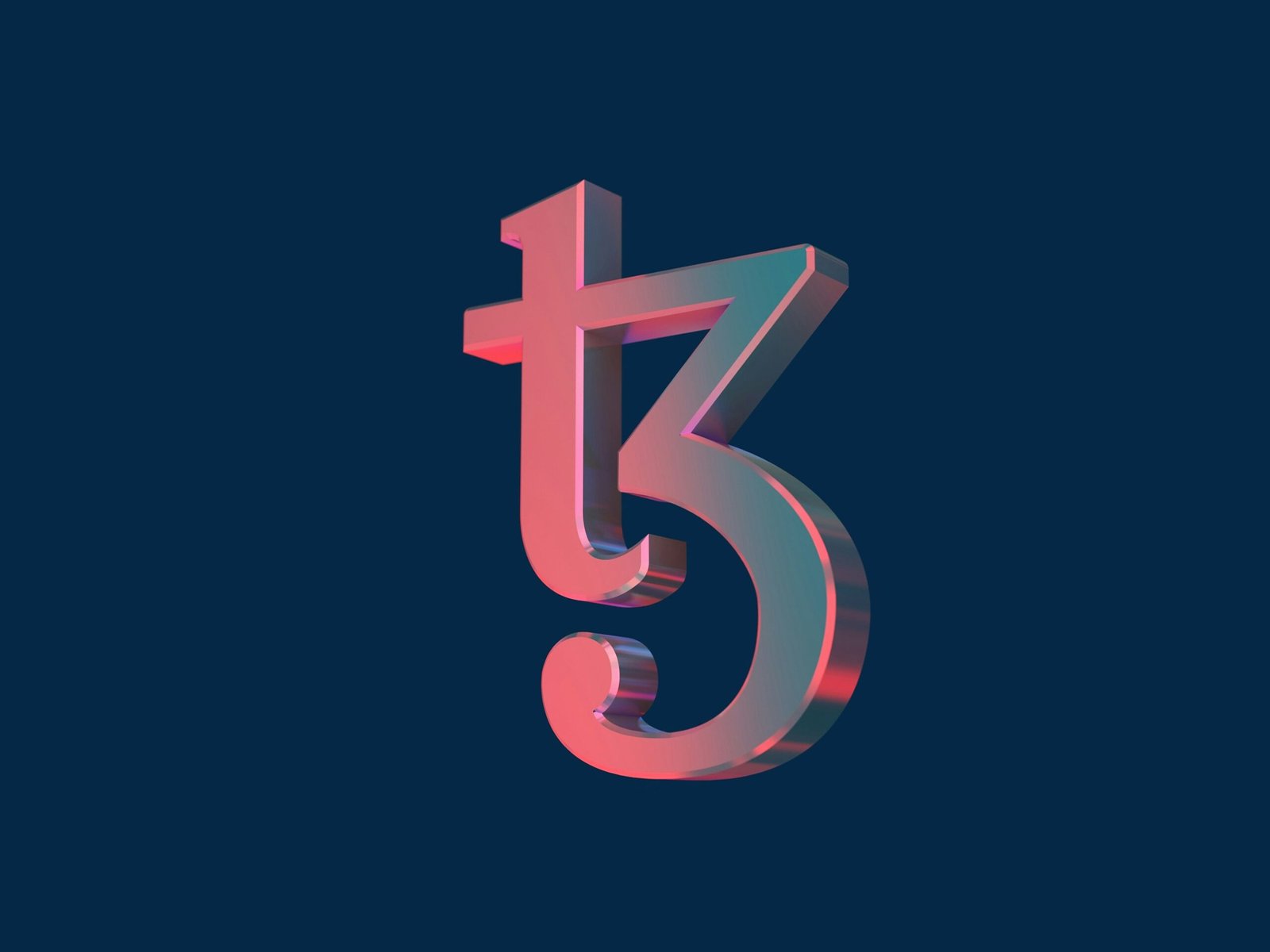Introduction to Distributed Ledger
Distributed ledger technology (DLT) represents a transformative leap in the manner in which information is stored, verified, and shared across multiple entities. At its core, DLT allows simultaneous access to a single, immutable database that is maintained across a network of computers. This decentralized model eradicates the need for a central authority, fostering transparency and enhancing trust among participants in various sectors, particularly in finance, supply chain management, and healthcare.
The significance of distributed ledger technology in today’s digital landscape cannot be overstated. It offers solutions to longstanding challenges associated with data integrity, security, and operational efficiency. For instance, in the financial sector, DLT has the potential to revolutionize traditional transaction processes, which often rely on time-consuming and costly intermediaries. By utilizing DLT, financial transactions can be settled in real-time, thus reducing costs and increasing the speed of currency exchanges.
Moreover, the application of DLT extends far beyond the realm of finance. Organizations are leveraging distributed ledgers to enhance the traceability of goods in supply chains, ensuring that products can be tracked from origin to destination, thus bolstering ethical sourcing and reducing fraud. In healthcare, DLT has been proposed as a mechanism for securely sharing patient records among medical professionals, which could ultimately lead to improved patient care and data management.
Despite its many benefits, the implementation of distributed ledger technology also raises questions related to governance, scalability, and energy efficiency. As we delve deeper into this subject, it becomes evident that DLT is not just a technological advancement, but a philosophical shift in how we perceive trust and collaboration in digital interactions. The exploration of distributed ledger technology invites us to reconsider the frameworks through which we can achieve security and efficacy in our increasingly interconnected world.
What is Distributed Ledger?
Distributed ledger technology (DLT) represents a significant advancement in how data is stored and managed across various platforms. Unlike traditional databases, which rely on a central authority or server, DLT distributes copies of the data across multiple nodes in a network. This decentralization is fundamental, as it ensures that no single entity has control over the entire database, thereby reducing the risk of fraud and manipulation.
One of the cornerstone principles of distributed ledger is transparency. Every transaction or record added to the ledger is visible to all participants in the network, enabling them to verify the authenticity of the information. This feature significantly enhances trust among users, as it mitigates the likelihood of dishonest practices that may arise in centralized systems. By leveraging cryptographic methods, distributed ledgers enhance security as well. Each record is encrypted and linked to the previous entry, forming an immutable chain. This ensures that once a transaction is added to the ledger, it cannot be altered or deleted, thereby preserving the integrity of the data.
Immutability is a crucial characteristic of distributed ledgers. With traditional databases, data can be modified or erased by those with sufficient access. However, in a distributed ledger, the consensus mechanism among network participants ensures changes can only be made through collective agreement, which greatly enhances data reliability. This consistency creates a robust environment for various applications, such as cryptocurrencies and supply chain management, where trust and verification are paramount.
As we delve deeper into the realms of science and philosophy, understanding the implications and potential use cases of distributed ledger technology will reveal its transformative power in reshaping various industries. The journey through this innovation not only uncovers technical aspects but also encourages us to reflect on its broader societal impact.
The Philosophical Underpinnings of Trust
The essence of trust in distributed ledger technology presents a profound challenge to traditional notions of authority and verification. In the digital era, where information can be easily manipulated, the philosophy guiding human trust must adapt. Trust, as delineated by philosophers such as Immanuel Kant, hinges on moral integrity and the ability to rely on others’ actions. However, in a decentralized network, the very foundation of trust transcends individual character and instead resides in the system itself.
In classical frameworks, trust was often vested in centralized authorities—banks, governments, or other institutions that were perceived as reliable arbiters of legitimacy. The digital revolution, however, has introduced a paradigm shift facilitated by distributed ledger technology, which allows trust to emerge from a consensus mechanism rather than a singular authority. This evolution evokes Joseph Raz’s perspective on authority and how it constitutes a form of trust in the rules that govern societal structures. Raz posited that trust in authority must be earned and cannot be mandated—a view that resonates with the ethos of blockchain.
To illustrate this evolution, consider Bitcoin, the first practical application of distributed ledger technology. The currency allows participants to engage in transactions without reliance on a central authority, significantly altering conventional trust paradigms. Here, users place their trust not in a bank but in mathematical algorithms and cryptographic security. This phenomenon aligns with the thoughts of French philosopher Michel Foucault, who emphasized the relationship between power and knowledge. In a blockchain context, knowledge is distributed across the network, diminishing the concentrated power of verification held by institutions.
The reimagined concept of trust in this framework highlights the need for collaboration and consensus among users rather than unilateral validation. By aligning with principles of transparency and collective agreement, distributed ledgers challenge an era characterized by skepticism toward traditional institutions and present a compelling case for re-evaluating our understanding of trust in the modern world.
Case Studies in Science: Where Distributed Ledger Shines
The advent of distributed ledger technology (DLT) has catalyzed significant advancements in various scientific domains, particularly in enhancing data integrity and transparency. One prominent area where DLT has proven invaluable is healthcare. A notable example is the implementation of blockchain solutions for maintaining patient medical records. By utilizing a decentralized ledger, healthcare providers can ensure that patient data is immutable and accessible only to authorized personnel. This not only enhances the integrity of sensitive health information but also fosters trust among patients, knowing their data is secure and unalterable.
In addition to healthcare, distributed ledger technology has made considerable strides in climate science. Researchers have begun employing blockchain systems to track carbon credits and emissions trading. For instance, numerous initiatives encourage companies to offset their carbon footprints by purchasing credits from verified projects. These transactions are recorded on a distributed ledger, ensuring accountability and traceability. This transparency is crucial in a field where credibility in carbon offsetting can have significant implications for environmental policy and corporate sustainability efforts.
Another noteworthy application is in the realm of scientific research, specifically in managing and sharing research data. The emergence of decentralized platforms allows scientists to publish their findings on a blockchain, creating an immutable record of their work. Such systems mitigate the risk of data manipulation and enhance credibility, as researchers can easily reference original datasets and methodologies. Furthermore, DLT facilitates collaboration across institutions, enabling seamless sharing and verification of information among peers, thus accelerating the pace of scientific discovery.
Ultimately, the integration of distributed ledger technology into scientific research exemplifies its profound impact on improving data integrity and fostering collaborative environments. As the technology continues to evolve, its potential applications in various fields will likely expand, further bridging the gap between complex scientific inquiries and accessible, trustworthy data.
The Intersection of Ethics and Distributed Ledger
The emergence of distributed ledger technology (DLT) has spurred a myriad of ethical considerations that cannot be overlooked. As DLT promotes transparency and trust, it simultaneously raises concerns about privacy and potential misuse of data. The ethical implications of implementing such technology are vital as they resonate deeply across various sectors, particularly finance, healthcare, and supply chain management.
One significant ethical concern relates to privacy. While DLT provides a decentralized network, enhancing transparency and accountability, it also poses risks regarding the storage and accessibility of personal information. A public ledger means that transactions are visible to all participants, which can lead to unauthorized access to sensitive data. Therefore, organizations utilizing DLT must grapple with the challenge of balancing transparency and privacy, ensuring robust measures are in place to protect individual identities while maintaining the benefits of open data.
Additionally, the potential for misuse of distributed ledger technology warrants scrutiny. The capacity for pseudonymity can sometimes create an environment conducive to fraudulent activities, such as money laundering or market manipulation. As we observe the proliferation of cryptocurrencies built upon DLT, the ethical ramifications of their unregulated use become increasingly pressing. There is a clear necessity for developing frameworks that govern the application of these technologies to mitigate risks and foster responsible usage.
On the other hand, the benefits of DLT cannot be ignored. Its capacity to streamline processes, reduce fraud opportunities, and enhance efficacy in transactions presents extensive advantages across industries. Therefore, stakeholders must engage in thoughtful discussions aimed at establishing ethical guidelines that promote safe and equitable access to the benefits derived from distributed ledger technology. This interplay between potential risks and benefits sets the stage for ongoing debate, highlighting the importance of addressing these ethical dimensions in the context of technological innovation.
Distributed Ledger vs Traditional Systems
In the realm of data management and record-keeping, distributed ledger technology (DLT) and traditional systems represent two distinct paradigms, each with its merits and challenges. Traditional systems often function through a centralized architecture, where a single entity or authority maintains control over the data and ensures its integrity. An everyday example of this is a bank, where the financial records and transactions are overseen by the institution itself. This centralized approach can provide efficiency and simplicity in management; however, it also poses risks. A single point of failure can lead to significant downtimes, data breaches, or loss of data, as evidenced by the numerous cyberattacks on banking institutions that have compromised sensitive user information.
Conversely, distributed ledger technology offers a decentralized framework, where data is replicated across multiple nodes in a network. This model enhances security and transparency, as seen in cryptocurrencies like Bitcoin, where every transaction is recorded on a public ledger accessible to all participants. The decentralized nature of DLT means that no single entity can manipulate the records, significantly reducing the risk of fraud. For example, in land registries using DLT, individuals can verify ownership without relying on a central authority, fostering trust among stakeholders and minimizing disputes.
Despite these advantages, distributed ledgers are not without their challenges. Scalability remains a concern, particularly in public blockchains where a growing number of transactions can slow down the network. Furthermore, the energy consumption associated with certain consensus mechanisms raises environmental concerns that are currently being addressed through innovative solutions. Thus, while distributed ledgers hold promise in transforming various industries, they also invite scrutiny and necessitate a careful evaluation against traditional systems. Understanding the inherent differences and potential implications of both frameworks is crucial for stakeholders as they navigate this complex landscape.
Future Prospects of Distributed Ledger in Science and Philosophy
The rapid evolution of distributed ledger technology (DLT) suggests that its future will be marked by significant advancements within the fields of science and philosophy. As we look ahead, various aspects of DLT will likely intersect with these domains, sparking new innovations and inquiries that could reshape societal structures and individual perspectives. One noticeable area is scientific collaboration, where distributed ledgers may serve as a vital tool for ensuring data integrity and traceability in research. Researchers could leverage DLT to share findings and methodologies transparently, thereby empowering collaborative projects that span institutions and even countries. This could usher in an era of unprecedented cooperation, leading to more robust scientific discoveries and advancements.
Furthermore, DLT’s implications extend beyond practical applications and into the realm of philosophical discourse. As decentralized systems challenge traditional notions of authority and ownership, they will inevitably prompt deep questions regarding ethics, trust, and the nature of truth. How will society adapt to these changes, particularly in relation to knowledge dissemination and intellectual property? Philosophers may need to grapple with the ethical implications of automated governance systems that utilize distributed ledgers, raising critical discussions about power dynamics and individual autonomy.
Society as a whole must engage with these evolving technologies, pondering their impact on human understanding and social contracts. As technology continues to play an integral role in shaping human interactions, examining how DLT can elucidate or complicate philosophical inquiries becomes increasingly important. The dialogue surrounding DLT must remain ongoing, as the technology infiltrates diverse disciplines, potentially leading to revolutionary advancements in both our scientific endeavors and philosophical frameworks.
Conclusion: Lessons and Open Questions
Throughout our exploration of distributed ledger technology (DLT), several key lessons have emerged that underscore its significance in both the realms of science and philosophy. Firstly, the concept of a decentralized ledger transcends mere technological innovation; it embodies a shift towards transparency and trust. This shift prompts a re-evaluation of traditional authority structures, reflecting a fundamental change in how societies can operate. In essence, DLT challenges the long-held notion of centralization, inviting us to consider how knowledge, power, and trust can be distributed across a network.
Secondly, the philosophical implications of DLT are profound. The technology’s inherent characteristics—immutability, transparency, and security—urge us to reconsider our understanding of ownership, identity, and even truth. As we analyze the impact of DLT on economic transactions, social contracts, and governance models, we are faced with questions about the future of human interaction and the nature of reality itself. This invites a necessary dialogue among scientists, philosophers, and technologists to navigate the complexities introduced by these advancements.
Moving forward, there are several open questions that merit further contemplation and debate. How will DLT evolve in the face of regulatory challenges and the necessity for privacy? Can we reconcile the concept of decentralization with the need for accountability? What ethical considerations arise as this technology is deployed in various sectors, including finance, healthcare, and beyond? These questions not only highlight the dynamic nature of DLT but also emphasize the need for interdisciplinary collaboration to address the multifaceted challenges that accompany its adoption.
In conclusion, as we venture further into the age of distributed ledgers, it is essential to remain inquisitive and open-minded. The lessons learned highlight both the transformative potential of DLT and the philosophical inquiries it invokes, paving the way for continued exploration and discussion among various fields of study.
SEO and Keywords Used
In the context of promoting discussions surrounding the concept of distributed ledger technology, it becomes imperative to strategically utilize a set of keywords that can drive engagement and visibility. The primary focus keyword identified within this article is “distributed ledger.” This term serves as a cornerstone for discussions pertaining to decentralized systems and blockchain technology. In addition to the primary keyword, several related terms were incorporated to enhance the content’s relevancy and reach. These include “decentralized database,” “blockchain technology,” “ledger system,” and “cryptographic security.” Such varied terminology ensures that the content resonates with a wider audience, particularly those engaged in technology, finance, and academia.
Effective search engine optimization (SEO) practices are crucial for increasing the accessibility and readership of any digital content. In an era where information is abundant, distinguishing relevant and meaningful discussion from the plethora of online material hinges on the strategic use of keywords. By thoughtfully integrating “distributed ledger” and its synonyms into the content, the article is more likely to appear in search results when users seek specific insights on this technology. The application of SEO techniques is not merely about requiring visibility; it promotes informed dialogue and enhances scholarly discussions in online forums and communities.
Moreover, employing a balanced approach to keywords — ensuring they appear naturally within the text and avoiding keyword stuffing — fosters readability and maintains the integrity of the discussion. This balance is critical, as content that feels forced or overly optimized can detract from the overall user experience. Thus, a well-rounded keyword strategy contributes to a higher likelihood of engagement and dissemination, ensuring that the significant implications of distributed ledger technologies can reach and inform a broader audience.






